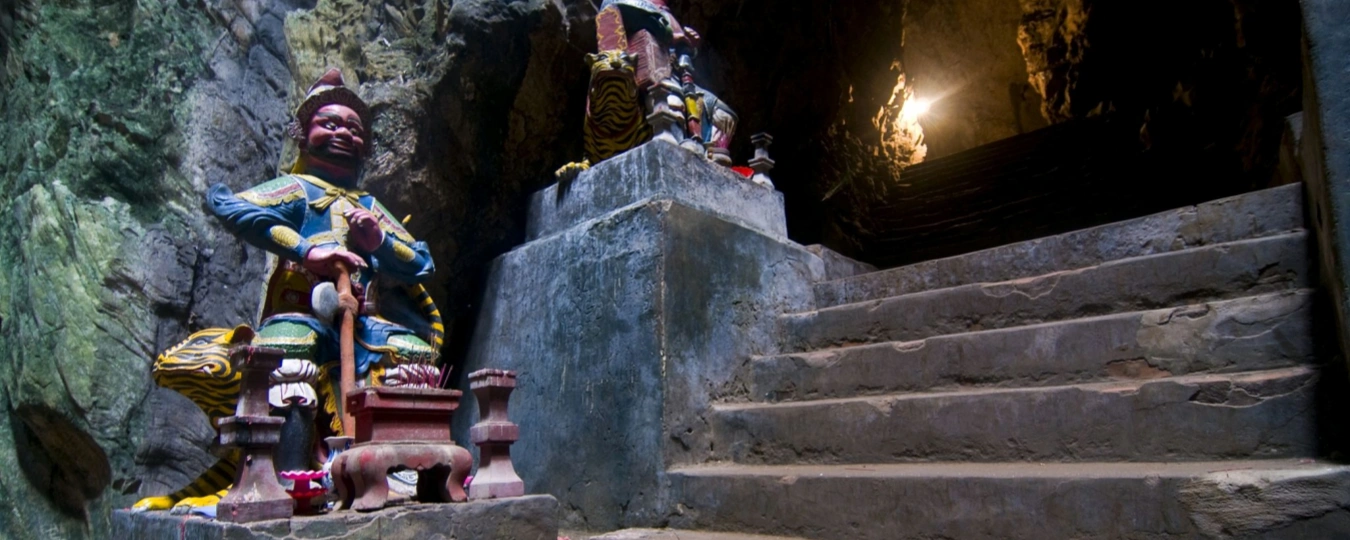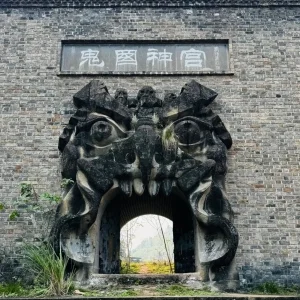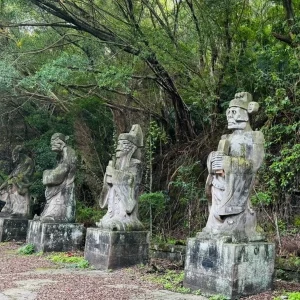
Fengdu Mingshan Scenic Section is a renowned cultural and historical destination in Southwest China. Centered on Taoist beliefs and underworld legends, this “Ghost City” boasts a history of over a thousand years. Blending religion, architecture, and folk art, the entire site offers a unique “netherworld” experience. It’s one of the most mysterious and unmissable attractions in Chongqing—perfect for travelers fascinated by history, religious structures, and Chinese folklore.
Address: Fengdu Mingshan Scenic Section, Mingshan Subdistrict, Fengdu County, Chongqing
Opening Hours: Daily 08:00–18:00. Hours may vary by season or events. It’s recommended to check the official website for up-to-date information before visiting.
Recommended Visit Duration: Allocate half a day to a full day (around 4–6 hours) to explore the major structures and mythological sites while fully immersing in the religious atmosphere.
Best Time to Visit: Spring and autumn (March–May and September–November) offer the most pleasant weather and scenic mountain views—making these seasons ideal for a visit.
Other Tips:
Tickets can be purchased online or at the entrance. During holidays, booking in advance is advised to avoid long queues.
The site features many steps and mountain paths. Wear comfortable, non-slip shoes and bring enough drinking water.
Some scenes depict underworld culture and may not be suitable for young children or those sensitive to religious themes.

Still a student? Good news—you’re eligible for discounted tickets!
University students and below enjoy 50% off admission. Just remember to bring a valid student ID—it’ll be checked at the entrance. Don’t miss out on saving money!
The most cost-effective way to get from downtown Chongqing to Fengdu Ghost City is by high-speed train plus taxi. The train ride takes about 1.5 hours, and a short taxi ride (~15 RMB) from the station will take you right to the entrance.
If you’re feeling spontaneous and want to take a taxi all the way from Chongqing… it’s doable, but expect to pay over 400 RMB—only worth it if you’re splitting the cost or money’s no object.
Inside the scenic area, although the attractions are clustered on the mountain, the slopes can be physically challenging—especially under the summer sun. Consider taking the cable car: 20 RMB one-way, 35 RMB round trip. Save your energy where you can!
Top Attractions and Insider Tips:
Fengdu Ghost City offers a fully immersive underworld experience—perfect for culture lovers, photography enthusiasts, and fans of the supernatural. Here are a few recommended highlights and notes:
Hengha Temple (Recommended: ~30 minutes)
The first stop you’ll encounter, dedicated to the warrior deities Heng and Ha who guard the mountain gate. Visitors often buy incense at the entrance—optional, but culturally immersive.
Bao’en Hall (Recommended: ~30 minutes)
Originally built during the Han dynasty, the current structure was reconstructed in 1984. It honors Kṣitigarbha Bodhisattva, known as the “Underworld Overseer” appointed by Buddha. Watch your step—stairs are steep!
Naihe Bridge (Recommended: ~1 hour)
Composed of three side-by-side bridges: the Health Bridge, Wealth Bridge, and the story-rich Naihe Bridge in the center. Legend has it that couples should take even-numbered steps while holding hands for happiness; singles take odd steps for safety. Make a wish and snap a memorable photo here.
Xingchen Dun (Recommended: ~30 minutes)
Legend says if you can place a 365-jin (about 182 kg) iron ball on its pedestal without it tipping over, your inner ailments will be healed. Just watching others try is entertaining enough!
Thirty-Three Steps to Heaven (Recommended: ~30 minutes)
A symbolic staircase representing the layers of heaven. Folklore claims that if you run up all 33 steps in one go, you’ll enjoy a smooth career and rise to the top. A spiritual workout with a sense of accomplishment!
Gate of Hell (Recommended: ~30 minutes)
As the name implies, this is the mythical boundary between the living and the dead. Guarded by 16 demon kings and two little spirits, it’s a dramatically atmospheric spot that commands awe—even if it’s just symbolic.
Yellow Springs Road (Recommended: ~30 minutes)
Though short in length, this path represents the inevitable journey after death in Chinese folklore. The atmosphere feels solemn—legend says once you pass it, there’s no turning back. A haunting metaphor that lingers.


Visitors consistently praise Fengdu Ghost City for its profound cultural richness and eerie atmosphere. Nearly 90% of tourists highlight its iconic sites—such as Naihe Bridge, Gate of Hell, and Hall of the Heavenly King—for their visual impact and mythological depth. Many see it as a rare window into traditional Chinese underworld beliefs and a great spot for unique photos. However, some note the steep stairs and slopes, which can be physically demanding for the elderly or children—visitors are advised to assess their own limits.
Want to plan your trip to Fengdu Ghost City with ease? Check out our carefully curated travel guide. It includes a detailed site map, highlights of iconic attractions, recommended touring routes, and even sample day trips that blend seamlessly with the local ghost culture—perfect for diving deep into Chongqing’s religious legends and ancient architecture.
Q: Can I buy tickets to Fengdu Ghost City on the day of my visit?
A: Yes, but during holidays or peak seasons, it’s best to book in advance via online platforms to avoid long wait times.
Q: Is there a guided tour service inside the scenic area?
A: Yes, both live tour guides and audio guide rentals are available. First-time visitors are encouraged to use a guide for a deeper understanding of the site’s history and cultural background.
Q: Is Fengdu Ghost City suitable for children?
A: While the site is rich in cultural content, certain underworld scenes and statues may be frightening for young children. Parents should evaluate their child’s sensitivity before visiting.
Q: Is the park accessible for people with mobility issues?
A: The site features many mountain paths and stairways, with limited wheelchair access. It may not be very friendly for visitors with mobility challenges—assistance from companions is advised.
Q: Are there dining or rest areas inside the park?
A: Yes. There are tea houses, snack stalls, and rest pavilions near the entrance and along the main route—ideal for a short break or to enjoy the scenery.

 English (US)
English (US)